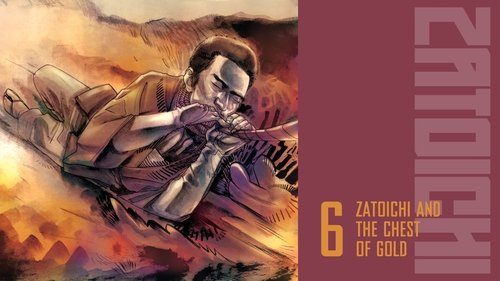daoldiges
I had low expectations for this film but have to say it was a pleasant surprise. The story had humor, visually it was very interesting, and at times beautiful. The lead actor is very good and I'd like to see more of his work.
Paul Kotta
The Zatoichi series take a huge jump upward with this entry. Everything also falls into line -- you can tell people in front of and behind the camera had really hit their stride.This film offers more action that the previous entries, as well as stunning cinematography and gorgeous production values. Another bonus -- the appearance of Katsu Shintaro's real-life older brother, Wakayama Tomisaburo. It's as if the box office performance of the previous films justified bringing out the big guns this time.If you're new to Zatoichi and wondering with which film to take the plunge, then "Chest of Gold" is definitely worth your time.
inframan
I think this stunning film ranks among the great action films of all time but could be hung as stills in any art museum. Hokusai & Hiroshige influences abound.Yet best of all is the unforgettable character Zatoichi himself. Shintaro Katsu created an everyman/superhero who had no equal, at least in western culture. A squat, homely, bandy-legged self-deprecating blind man full of humor & humility & an abundance of spirituality. And could he make that sword dance.These movies have no equal. Each one is as perfectly made as any movie can be. I used to go see them when they first appeared in the theaters of San Francisco & Los Angeles Japanese neighborhoods. I still love them every bit as much now.
Tom (bighouseaz)
This is one of my favorite films in the Zatoichi series. The opening film credit scene is amazing. This scene is a superbly choreographed, artistic display of swordsmanship that takes place on a darkened stage with three attacks on Zatoichi. Katsu Shintaro shows that the sword is an integral part of the Zatoichi story, and he is a master of the iai style of combat.In this film Zatoichi is shown no respect. He is mistrusted by farmers, shown disdain by government officials, and finally whipped by a samurai. The samurai villain is played by Katsu's real-life brother, Tomisaburo Wakayama. In one scene Wakayama shows an incredible sword drawing technique that is as equally impressive as Katsu's.In the end, Zatoichi saves the day as always.Yet, unlike in the fourth film The Fugitive where Zatoichi is able to shake of the trials and pain of his struggles and dances off to the horizon accompanied by some toe-tapping music, in the Chest of Gold Zatoichi has been abused and beaten so badly throughout the film that he can only manage to shuffle away towards the horizon as the farmers celebrate their good fortune in the distance. It's a poignant and sad scene.




